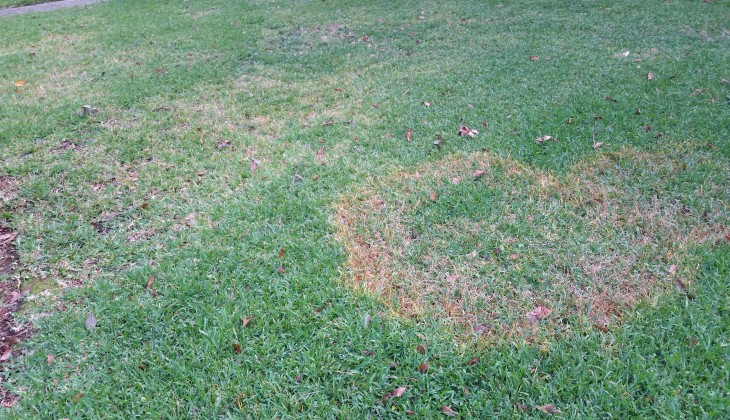
Lawn diseases are a common problem for many lawns in the Midlands. Our Disease Control service provides curative and preventative treatments for lawn diseases like Large Patch, Gray Leaf Spot, Dollar Spot and more. Prevention is the best protection, so if your lawn is at risk you might consider our Estate Lawn Care program for a more affordable approach to controlling lawn diseases.
There are many turf diseases that can affect lawns in the Midlands. Most are caused by fungi or other organisms present in the soil. These organisms usually only cause damage when conditions are ideal for the spread of the disease. Symptoms of turf disease usually include irregularly shaped, brown or gray spots in the grass.
Conditions favoring the spread of lawn disease usually include warm, humid weather and extended periods of leaf wetness. The good news is, there are cultural practices homeowners can implement to limit the potential for lawn disease. One of the most important disease control practices homeowners can do is to water properly. Deep and infrequent watering is best, and irrigation should always be done during the early morning hours. This will allow the leaves to dry out during the day.
Proper mowing is important for disease control, as well. Mowing should usually be done later in the day, when the lawn is dry. It's also important to keep your mower blades sharp, to limit injury to the grass. Maintain the proper cutting height and frequency for your grass type. Never cut off more than 1/3 the overall height of your grass during one mowing. Be sure to mow often enough to keep up with the growth of your grass.
Core Aeration can also be a very helpful disease control practice. This not only reduces soil compaction, but also promotes deeper, healthier roots and helps to manage thatch. Managing the thatch layer in your lawn can improve air circulation and allow water and nutrients to more easily reach the roots of your grass.
The use of turf fungicides is also very helpful for disease control. They work best when applied as a preventative measure, but they will also stop the progress of active diseases. These treatments are generally very effective for up to 30 days. If you think your lawn is in need of disease control, give us a call. We are here to answer any questions you might have. Our Disease Control services and advice can help protect your lawn throughout the year.